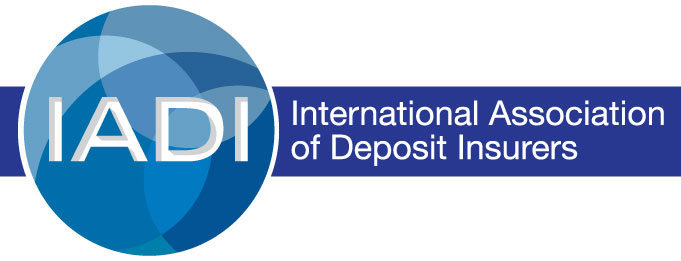Remarks by Eva Hüpkes, Secretary General, International Association of Deposit Insurers, at the 2023 IADI Annual Conference: “Successfully Managing Systemic Risk: Deposit Insurance in a Turbulent World”
Good morning,
It is great to be here in Boston one of the oldest cities in the United States and the birthplace of the American Revolution.
Thank you very much to the President and CEO of the Massachusetts Credit Union Share Insurance Corporation (MSIC) and his staff for hosting us here in Boston.
This year Boston will celebrate the 250th anniversary of the Boston Tea Party, a pivotal moment that changed the course of American history.
As our Association embarks on its third decade, it too faces changes that demand some courage and action, not a revolution I hope.
Much has changed since IADI was founded at the beginning of the century. So, it is fitting to reflect on how it can become even more relevant in the service of its members.
In the years since its establishment, IADI has evolved into a global standard setter for deposit insurers. And deposit insurers, whatever their institutional mandate and nature, must work with others who seek to ensure a robust and vibrant financial fabric in the face of financial crises and the prospect of transformational change in banking and finance.
My own story parallels IADI’s. I started working on the same issues at the turn of the century, first at the International Monetary Fund during the Asian financial crisis, then at the Swiss financial supervisor where a small bank failure let us to reconsider the approach to banking regulation and resolution, and, until just over a month ago, at the Financial Stability Board where crisis prevention and management were an important focus of my work.
I feel greatly privileged to be able to work now with IADI on these important questions, and I thank IADI Members for their confidence and support.
Crises as opportunities
One important lesson of the past few decades is that crises always offer opportunities. They provide the impetus for renewal and rethinking.
- The Asian crisis taught us the importance of effective prudential frameworks, insolvency, and workout regimes.
- The failure of a small bank in Switzerland led to the introduction in 2003 of mandatory deposit insurance – surprisingly perhaps, much later than in many other countries.
- The Global Financial Crisis led to the introduction of a global framework for the regulation and resolution of systemically important financial institutions.
So, what can we learn from the recent turmoil in March this year?
Much like other international bodies, IADI is still drawing out the lessons and discussing reforms that may be needed. It is impossible to overstate the size and speed of outflows facilitated by technology. Technological innovation is having a massive impact on our society as a whole. It is also transforming the banking industry and banking regulation in fundamental ways. Deposit insurers must now confront the fact that bank runs can occur far sooner and far faster than in the past.
Can technology solve the problem of “runs”?
Technology is a double-edged sword.
- Central bank digital currencies (CBDCs) could theoretically reduce the likelihood of bank runs by providing a more stable and accessible form of money directly backed by the central bank. According to a 2021 BIS survey 86% of central banks around the world are actively researching the potential for CBDCs, 60% are experimenting with the technology and 14% are deploying pilot projects.¹
- However, given their digital nature, CBDCs could also permit bank depositors– those who are insured as well as those who are not run at the drop of a hat. At the same time CBDCs could be programmed to limit withdrawals so that depositors could only walk – not run.
- Alternatively, privately issued digital assets – so-called stablecoins that are expected at all times fully backed by highly liquid assets could provide an alternative to bank deposits. However, unless they were encumbered with speed bumps and programmed to limit withdrawals so that depositors could only walk – not run, they could also permit users to rush to convert their coins into fiat currency and lead to a de-pegging at hyper-speed.
Alternative proposals
Alternative ideas being discussed in academia to address the risk of bank would involve doing away to differing degrees with fractional reserve banking and requiring banks to pre-position collateral at the central bank as pledge so that they always have access to liquidity when depositors withdraw funds.
Some of these ideas could have a fundamental impact on the nature of banking as we know it. Would they solve or would they exacerbate the problem of bank runs and bank failures? We do not know.
Technological innovation can improve efficiency and risk management, but it does not eliminate the core issues that lead to bank failures such as poor governance, unsustainable business models, or unfavourable macroeconomic conditions. Technology also introduces new risks and puts competitive pressure on traditional banks that can cause disruption.
There is an important distinction between preventing failure and maintaining stability. A system that seeks to prevent all failures is likely to stifle innovation and be overly costly. Andrew Metrick and Paul Schmelzing from the Yale School of Management published a working paper on “Banking crisis interventions since 1257” which demonstrates that banking crises have been with us since the beginning of banking.²
Public confidence in the safety of bank deposits is key
It is easy to underestimate the value of deposit insurance when times are good. When times are bad, governments often see the urgent need for such arrangements. According to the 2022 IADI Annual Survey, 45% (“almost half”) of deposit insurers were established after the year 2000 largely in response to actual banking problems.³
Whenever banking stress occurs, bank customers will want to know that their funds are secure. Public confidence in the safety of bank deposits is key to maintaining financial stability.
It is no surprise that Google searches for “deposit insurance” increase substantially during times of stress. Google Trends shows that searches for ‘deposit insurance’ more than quadrupled worldwide around March 2023.
Recent events have resoundingly reaffirmed the importance of your role as deposit insurers in maintaining confidence in the financial system and safeguarding financial stability.
Who pays?
When failures happen, the question is ‘who pays? There is broad agreement that it shouldn’t be the taxpayer. Equity holders should be first in line (and we should certainly think about how management can be held accountable and liable). Some larger banks have an extra buffer of loss-absorbing capacity. Professor Dan Tarullo led the development by the Financial Stability Board of the Total Loss-Absorbing Capacity (or TLAC) standard for the largest global banks. In some jurisdictions, like the EU, even mid-sized banks have an extra buffer – so-called Minimum Requirement for own funds and Eligible Liabilities (MREL) – that protects depositors. However, for smaller banks such a buffer is not available. So, deposits – people’s life savings – could be next in line. Therefore, the importance of deposit insurance cannot be overstated.
What amount of depositors’ funds can or should be protected and how quickly depositors can access their funds are questions that go to the heart of the deposit insurance function and will be discussed at today’s conference.
The General Manager of the Bank for International Settlements recently said: “Society demands immediacy, everything has to be immediate”.⁴
What does this mean for deposit reimbursements – a core activity of many deposit insurers?
Our current standard under the Core Principles is reimbursement within seven days. Will this still meet our objective of reducing the likelihood of bank runs when we live in a global society that demands “immediacy”? How should we deal with an expectation of ‘uninterrupted access to deposits’? Can we make use of alternative payment methods and the wealth of digital innovation to expedite reimbursements to insured depositors?
And what about the level of deposit insurance?
Uninsured deposits are a lurking problem for banking stability in an era of online banking. One quick fix would be to expand the coverage of deposit insurance. Yet, this could be costly and, depending on the nature of the expansion whether it covers all accounts or is targeted and covers business payment accounts only, could increase moral hazard.
Other measures may be needed, such as, for example, measures to slow down withdrawals of uninsured deposits and/or make them more costly. However, we need to carefully assess whether any such measures may be counterproductive as they could undermine confidence and negatively impact financial stability. Bank accounts are after all fundamentally different product from money market funds where redemption restrictions form part of the regulatory framework.
An alternative measure under discussion is to introduce a subordinated debt requirement. That is long-term debt held by bondholders with governance rights have the ability as well as the incentive and expertise to monitor senior managers and exercise restraints as needed.
The turmoil in the United States, the UK and Switzerland has prompted a consideration of these and other proposals to enhance safety net design.
Deposit insurance systems as components of the financial safety net
The speed with which failure can occur means that both preventative measures and early intervention as well as resolution planning and crisis management preparedness are more important than ever.
The IADI Core Principles state that “All banks within the safety-net should be subject to an effective resolution regime.” I should note that our Core Principles use the term “resolution” not as defined in European legislation but [as also defined by the FSB], namely as referring to all forms of handling a bank failure, including liquidation (under insolvency law) and depositor reimbursement, transfer and/or sale of assets and liabilities, the establishment of a temporary bridge institution and the write-down of debt or conversion to equity.
Recognising the close links amongst financial safety net participants, including supervisors, central banks, and resolution authorities, today’s conference panels will focus on the lessons learned from the March events and the interactions between the different components of the financial safety net. One panel will look at how deposit insurance policies interact with liquidity and capital regulation, including loss-absorbing capacity requirements in resolution, to address the risk of bank runs. Another panel will look at how deposit insurance systems and resolution regimes interact, exploring where conflicts of interest may arise and how they could be addressed.
It is important to note that there is no “one size fits all” approach for any of the important elements in a deposit insurance system. Institutional, cultural, historical, and legal differences among jurisdictions should be incorporated through tailored deposit insurance system design, and suitable integration within the jurisdiction’s financial safety net. Recognising that there are different models and solutions, including that of credit unions, we will have a panel dedicated to this topic. We have a fascinating conference agenda to look forward to, so let me conclude.
Conclusion
Our world is changing rapidly. The banking environment is not immune; it is changing at a pace we’ve never seen before. This new era demands an openness to new and sometimes radical ideas. Whether it’s blockchain technology or decentralised systems, we need to explore and adapt to be able to protect the interests of depositors.
As the challenges grow, so must our capabilities to protect our global community of depositors in this new digital era.
One important step will be the review of our Core Principles for Effective Deposit Insurance Systems in light of the lessons learned from recent events.
Let’s work together and face our challenges head-on, inspired by the revolutionary spirit that makes Boston great.
Thank you
¹ Gaining momentum – Results of the 2021 BIS survey on central bank digital currencies
² Banking crisis interventions since 1257.
³ Deposit Insurance: A Survey of Actual and Best Practices (imf.org)
⁴ 4 Technology is moving faster than regulation in crypto, according to BPI’s Carstens – 247 News Agency

